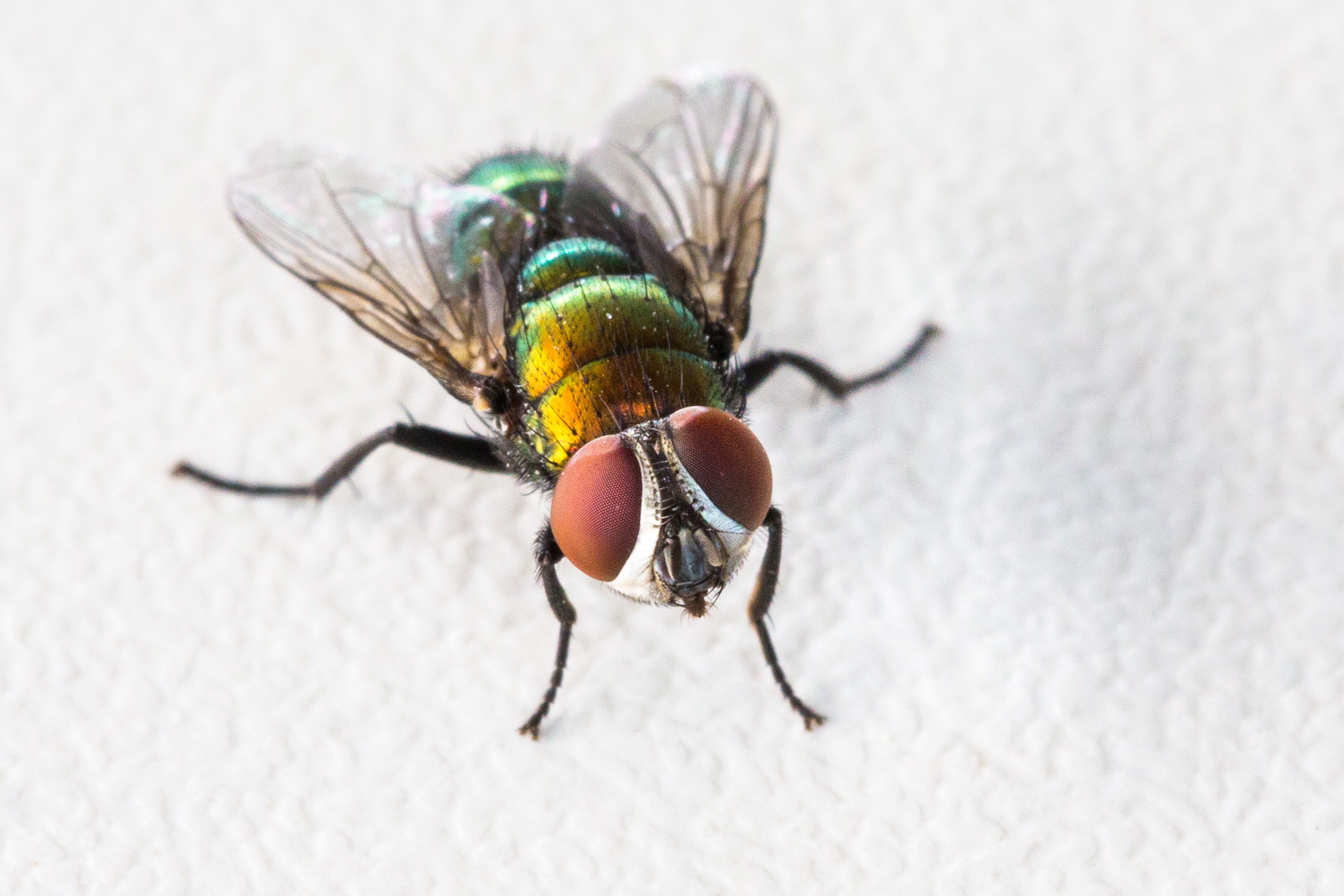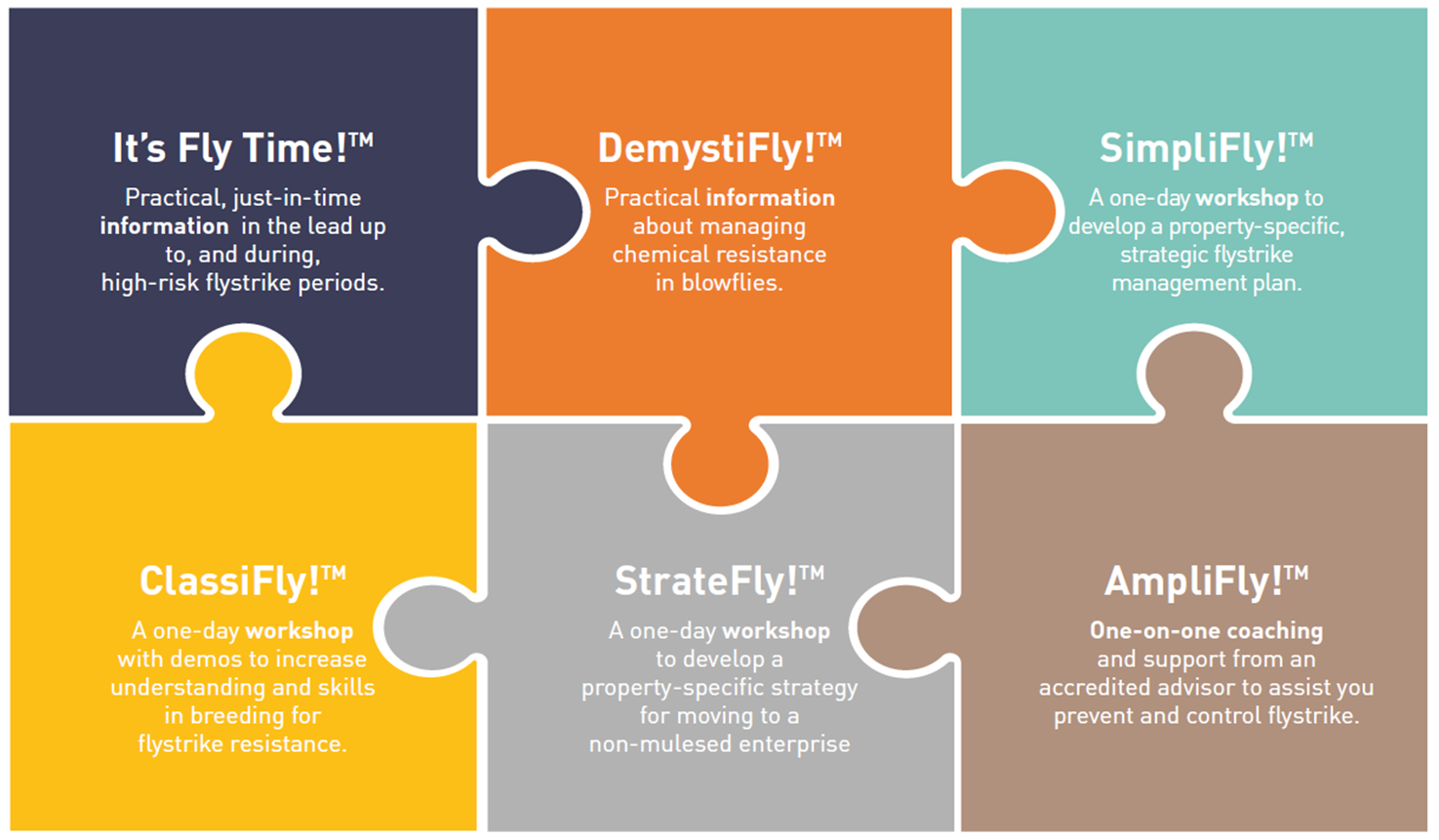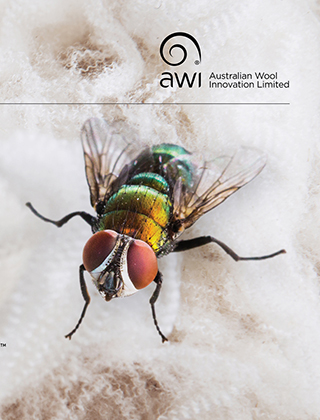Welcome to Australian Wool Innovation, a hub for the woolgrowers of Australia.
Not a woolgrower? Looking for information about wool products, wool care or wool processing?
The Woolmark Company is the global authority on wool. Visit Woolmark.com instead.
Be prepared for flystrike season

As we head into flystrike season, now is the time to implement your annual flystrike management plan. Early prevention of flystrike is key to minimising animal welfare and economic threats. The full suite of resources in the AWI Flystrike Extension Program are now available for woolgrowers.
It is important to have a broad flystrike management plan which incorporates the following three aspects, but preventing flystrike is key.
- Prevention of flystrike
Selecting sheep which are less susceptible to flystrike is a good long-term strategy to minimise flystrike. Short-term preventative activities include shearing or crutching to remove wool and dags, applying appropriate chemical treatments, reducing the risk of scouring which causes dags, careful selection of less flystrike-prone paddocks, and killing maggots and removing sources of protein.
- Monitoring to detect flystrike
Monitor all mobs of sheep for signs of flystrike during high-risk periods, but especially weaners. Monitoring involves a combination of checks including looking for flystrike in sheep, checking populations of flies and checking weather conditions.
- Treatment options when flystrike occurs
Make sure you use a combination of treatment activities and that you don’t rely on one single activity alone. It’s important to make sure all flystruck sheep are effectively treated, all maggots are killed and sources of protein are removed to aid the sheep’s recovery and break the lifecycle of flies to prevent additional strikes.
AWI’s Flystrike Extension Program
AWI’s Flystrike Extension Program is available to woolgrowers across Australia to improve the lifetime welfare of their sheep, reduce their reliance on mulesing and crutching, optimise chemical use and increase whole farm profitability.
With the recent rollout of StrateFlyTM workshops and AmpliFlyTM one-on-one coaching, all six components of AWI’s Flystrike Extension Program are now available to woolgrowers to support their flystrike management – see below.
Woolgrowers can pick and choose how to get involved with the different components of the program that best suits their requirements, sheep type, climate, operating environment and husbandry practices.

More information:
- Information on the above six resources in AWI’s Flystrike Extension Program is available at wool.com/flystrikeresources
- For information on SimpliFly™, ClassiFly™ and StrateFly™ workshops available near you, contact the AWI grower extension network in your state and sign up to their free newsletters. You can find your network at wool.com/networks or call AWI on 1800 070 099.
- More detailed information on flystrike management, including access to interactive decision support tools, is at flyboss.com.au
- Information on AWI’s flystrike research, development and extension program is at wool.com/flystrike
This article appeared in the September 2024 edition of AWI’s Beyond the Bale magazine. Reproduction of the article is encouraged.













